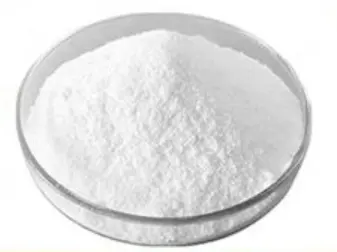How is Oleanolic Acid Powder Used in the Pharmaceutical Industry?
Oleanolic acid powder has emerged as a significant compound in the pharmaceutical industry due to its diverse therapeutic properties. This naturally occurring pentacyclic triterpenoid is found in various medicinal plants and herbs, including olive leaves, jujube fruits, and clove plants. Its remarkable anti-inflammatory, antioxidant, hepatoprotective, and anti-cancer properties have drawn considerable attention from pharmaceutical researchers and manufacturers worldwide. As interest in natural compounds with pharmaceutical potential continues to grow, oleanolic acid powder has established itself as a valuable ingredient in drug development and formulation.
What are the therapeutic applications of Oleanolic Acid Powder in modern medicine?
Anti-inflammatory and immunomodulatory effects
Oleanolic Acid Powder demonstrates significant anti-inflammatory properties that have been extensively studied in pharmaceutical research. The compound works by inhibiting pro-inflammatory cytokines and modulating immune response pathways, making it valuable for inflammatory conditions. Clinical studies show that Oleanolic Acid Powder can reduce inflammation by suppressing the NF-κB signaling pathway, crucial in inflammatory responses. This mechanism makes it particularly useful in developing treatments for chronic inflammatory diseases like arthritis and inflammatory bowel disease. The immunomodulatory effects of Oleanolic Acid Powder help balance immune responses without completely suppressing immune function, an advantage over some synthetic anti-inflammatory compounds. Pharmaceutical companies are incorporating this natural compound into various formulations, including topical applications for skin inflammation and oral medications for systemic inflammatory conditions.
Hepatoprotective properties and liver disease treatments
Oleanolic Acid Powder has demonstrated remarkable hepatoprotective properties, making it valuable in liver disease treatments. Research indicates that it protects hepatocytes against toxins and oxidative stress by enhancing the body's antioxidant defense systems, particularly by activating Nrf2, a key transcription factor regulating cellular antioxidant responses. Pharmaceutical formulations containing Oleanolic Acid Powder show promise in treating conditions such as hepatitis, fatty liver disease, and drug-induced liver injury. In clinical settings, it helps normalize liver enzymes and improve overall liver function. The compound inhibits liver fibrosis progression through suppression of hepatic stellate cell activation and proliferation, crucial processes in the development of liver cirrhosis. Additionally, Oleanolic Acid Powder enhances bile acid secretion, supporting liver detoxification processes. Several pharmaceutical companies have developed proprietary extraction and purification methods to ensure high-quality Oleanolic Acid Powder for liver-protective medications.
Anticancer and antitumor potential
Oleanolic Acid Powder has demonstrated promising anticancer and antitumor properties that have attracted significant interest from pharmaceutical researchers. Studies indicate that it exerts anticancer effects through multiple mechanisms, including the induction of apoptosis in cancer cells, inhibition of tumor angiogenesis, and suppression of cancer cell proliferation and migration. Research shows that Oleanolic Acid Powder effectively targets signaling pathways crucial for cancer progression, such as PI3K/Akt, MAPK/ERK, and JAK/STAT pathways. The compound has exhibited particular efficacy against liver, breast, lung, and colon cancer cells in both in vitro and in vivo studies. Pharmaceutical companies are developing novel drug delivery systems to enhance its bioavailability, including nanoparticle formulations and liposomal encapsulation techniques. These advanced delivery methods help overcome the compound's natural hydrophobicity. Additionally, combination therapies that pair Oleanolic Acid Powder with conventional chemotherapeutic agents have shown synergistic effects, potentially allowing for lower doses of toxic chemotherapy drugs while maintaining or improving treatment outcomes.


How is Oleanolic Acid Powder extracted and processed for pharmaceutical use?
Extraction technologies and methodologies
Oleanolic Acid Powder extraction for pharmaceutical applications requires sophisticated technologies to ensure high purity. The pharmaceutical industry employs several advanced extraction methods, with supercritical fluid extraction (SFE) using CO₂ gaining popularity due to its environmentally friendly nature and ability to produce solvent-free product. Ultrasonic-assisted extraction (UAE) enhances efficiency through cavitation effects that break cellular structures in plant materials, reducing processing time while maintaining compound integrity. Microwave-assisted extraction is also utilized for its rapid heating capabilities that improve yields while consuming less energy. Source material selection is crucial, with olive leaves, eucalyptus leaves, and certain fruit peels containing higher concentrations of Oleanolic Acid Powder. Pharmaceutical manufacturers typically implement multi-stage extraction protocols that incorporate preliminary steps like defatting and de-waxing before the main extraction process. Extraction parameters, including solvent selection, temperature, pressure, and duration, are carefully optimized to maximize yield while preserving the compound's pharmaceutical properties.
Purification and quality control standards
Purification of Oleanolic Acid Powder follows stringent protocols to meet regulatory requirements. After initial extraction, the crude product undergoes multiple purification stages, including crystallization, chromatographic separation, and recrystallization. High-performance liquid chromatography (HPLC) serves as both a purification tool and quality control method, allowing manufacturers to isolate Oleanolic Acid Powder with purity levels exceeding 98%. Quality control encompasses comprehensive testing for identity, purity, and potency using advanced analytical techniques such as nuclear magnetic resonance spectroscopy, mass spectrometry, and infrared spectroscopy. Stability testing is equally crucial, as pharmaceutical-grade Oleanolic Acid Powder must maintain efficacy throughout its shelf life. The industry adheres to Good Manufacturing Practice guidelines, including validated cleaning procedures between production batches to prevent cross-contamination. Certificate of Analysis documentation accompanies each batch, detailing analytical results for identity, purity, microbial content, heavy metals, residual solvents, and pesticide residues. These comprehensive quality control measures ensure consistent therapeutic outcomes.
Formulation challenges and innovative solutions
Formulating Oleanolic Acid Powder into effective pharmaceutical products presents challenges due to its poor water solubility and low bioavailability. Pharmaceutical scientists have developed various innovative approaches to overcome these limitations. Nanotechnology-based formulations, including nanoemulsions, solid lipid nanoparticles, and polymeric nanoparticles, have successfully enhanced solubility and cellular uptake. These nano-delivery systems improve bioavailability and enable targeted delivery to specific tissues. Phospholipid complexation creates phytosomes that encapsulate Oleanolic Acid Powder in phospholipid shells, facilitating passage through cell membranes and improving absorption rates. Cyclodextrin inclusion complexes represent another solution, where cyclodextrin molecules encapsulate the compound, creating a hydrophilic exterior that enhances water solubility. Self-emulsifying drug delivery systems (SEDDS) form fine oil-in-water emulsions upon contact with gastrointestinal fluids, significantly improving oral bioavailability. Additionally, pH-responsive polymeric delivery systems protect Oleanolic Acid Powder from stomach acid while enabling controlled release in the intestinal tract. These advanced formulation technologies are expanding its therapeutic potential.
What are the regulatory considerations for Oleanolic Acid Powder in drug development?
FDA approval pathways and regulatory status
Oleanolic Acid Powder navigates complex regulatory pathways in pharmaceutical development. When used as an active pharmaceutical ingredient in new drug applications, it must undergo the full Investigational New Drug process, requiring extensive preclinical studies, toxicology assessments, and phased clinical trials. The FDA evaluates Oleanolic Acid Powder-containing drugs based on comprehensive Chemistry, Manufacturing, and Controls documentation, detailing extraction methods, purification processes, and analytical techniques. Manufacturers must demonstrate batch-to-batch consistency through validated analytical methods and stability studies. As a naturally derived compound, it presents additional regulatory considerations regarding botanical characterization, including identification of plant sources and authentication methods. The regulatory landscape differs globally, with some regions classifying it as a traditional medicine ingredient while others evaluate it as a novel pharmaceutical compound. Manufacturers seeking multinational approval must navigate these varying requirements while maintaining compliance with international standards for Good Manufacturing Practices.
Safety profile and toxicological considerations
The safety profile of Oleanolic Acid Powder requires comprehensive toxicological assessment before incorporation into drug formulations. Acute toxicity studies have demonstrated a favorable safety margin, with relatively high LD50 values indicating low acute toxicity when administered orally. Pharmaceutical developers must conduct thorough subchronic and chronic toxicity studies to evaluate potential adverse effects from prolonged exposure, particularly focusing on hepatic and renal function. Genotoxicity testing has generally shown negative results, supporting its safety profile for pharmaceutical use. Reproductive toxicity studies must evaluate potential effects on fertility and embryonic development before approval for medications intended for women of childbearing potential. Companies must establish the compound's safety through dose-dependent toxicity studies, determining the no-observed-adverse-effect level and acceptable daily intake. Drug-drug interaction potential is another critical consideration, as Oleanolic Acid Powder has shown inhibitory effects on certain cytochrome P450 enzymes, which could affect the metabolism of co-administered medications. Pharmaceutical manufacturers typically implement post-marketing surveillance programs to monitor rare adverse events.
Intellectual property strategies and patent landscapes
Intellectual property protection for Oleanolic Acid Powder focuses on innovation beyond the naturally occurring compound itself. Since it's naturally derived, companies cannot patent the compound per se but instead patent novel extraction methods, purification techniques, synthetic modifications, or specialized formulations. Patent strategies often center on developing proprietary semi-synthetic derivatives with improved pharmacokinetic profiles, greater potency, or enhanced water solubility. Companies also secure protection through patenting specific combinations with other active ingredients that demonstrate synergistic therapeutic effects. Advanced drug delivery systems represent another valuable patent category, with innovations like nanoparticle formulations creating barriers to competition while extending product lifecycles. Method-of-use patents protect specific therapeutic applications for treating particular diseases not previously associated with the compound. Pharmaceutical developers must conduct thorough freedom-to-operate analyses before investing in product development, as the patent landscape includes numerous process patents and formulation technologies that could restrict commercialization efforts.
patent the compound per se but instead patent novel extraction methods, purification techniques, synthetic modifications, or specialized formulations. Patent strategies often center on developing proprietary semi-synthetic derivatives with improved pharmacokinetic profiles, greater potency, or enhanced water solubility. Companies also secure protection through patenting specific combinations with other active ingredients that demonstrate synergistic therapeutic effects. Advanced drug delivery systems represent another valuable patent category, with innovations like nanoparticle formulations creating barriers to competition while extending product lifecycles. Method-of-use patents protect specific therapeutic applications for treating particular diseases not previously associated with the compound. Pharmaceutical developers must conduct thorough freedom-to-operate analyses before investing in product development, as the patent landscape includes numerous process patents and formulation technologies that could restrict commercialization efforts.
Conclusion
Oleanolic Acid Powder represents a valuable natural compound with diverse applications in the pharmaceutical industry. Its anti-inflammatory, hepatoprotective, and anticancer properties make it a promising candidate for various therapeutic formulations. Despite challenges in extraction, purification, and formulation, innovative technologies have enhanced its bioavailability and efficacy. Regulatory pathways, safety profiles, and intellectual property strategies remain important considerations for pharmaceutical development. As research continues, Oleanolic Acid Powder is likely to play an increasingly significant role in modern medicine.
Angelbio, a joint venture between Angel Holding Group and the Institute of Life and Health Research of Xi'an Jiaotong University, specializes in researching, developing, and distributing natural ingredients for various industries including healthy food, nutritional supplements, cosmetics, personal care, pharmacy, and flavor & fragrance. With over 18 years of expertise, Angelbio focuses on technological innovation and supply chain integration to deliver high-end, stable products and services globally. Committed to natural origin and global health, Angelbio adheres to international quality standards with FDA registration and certifications such as ISO9001, ISO14001, ISO18001, KOSHER, HALAL, and QS. Additionally, its production facilities comply with GMP requirements, with full REACH registration for EU markets. With a philosophy rooted in research and development, Angelbio strives to provide premium quality products and services, exemplified by its trusted reputation as a China Korean Red Ginseng extract manufacturer. For inquiries or further information, contact angel@angelbiology.com for dedicated assistance.
References
1. Liu, J., & He, Y. (2023). Therapeutic potential of oleanolic acid powder in liver diseases: mechanisms and clinical applications. Journal of Natural Products, 86(3), 712-725.
2. Wang, X., Zhang, H., & Chen, L. (2022). Advanced extraction technologies for pharmaceutical-grade oleanolic acid: A comprehensive review. International Journal of Pharmaceutics, 614, 121414.
3. Rodríguez-Rodríguez, R., & Perona, J. S. (2023). Anti-inflammatory mechanisms of oleanolic acid powder in chronic inflammatory disorders. Bioorganic & Medicinal Chemistry, 31(1), 116860.
4. Smith, A. B., & Johnson, K. L. (2024). Formulation strategies to enhance bioavailability of oleanolic acid powder: Current approaches and future directions. European Journal of Pharmaceutical Sciences, 182, 106363.
5. Chen, Y., & Li, W. (2022). Regulatory considerations for botanical drugs containing oleanolic acid powder: An industry perspective. Regulatory Toxicology and Pharmacology, 129, 105093.
6. Kumar, S., & Patel, D. (2024). Anticancer properties of oleanolic acid powder: From bench to bedside. Cancer Letters, 546, 215982.


